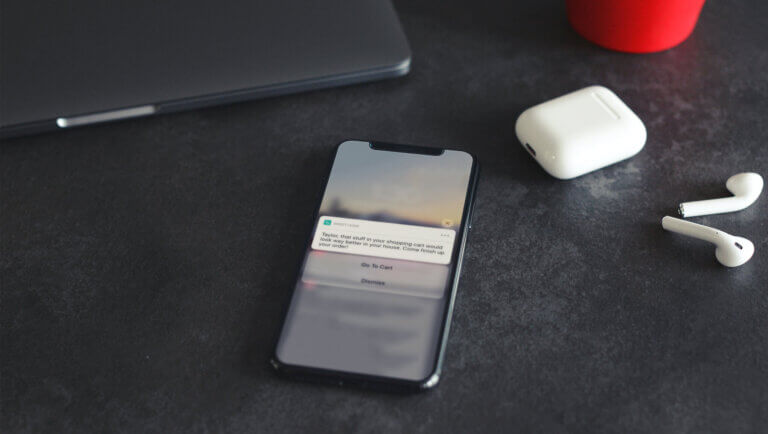
Addressing and Winning Back Dormant App Users
The typical definition of a dormant user is one who hasn’t used your app in a while. Since the goal of an app is to encourage frequent use, “a while” for most apps is a relatively short period: a few weeks or a month.
The exact definition depends on how you measure mobile engagement:
- If you have a breaking news or social app for which you’re measuring daily active users (DAU), a “dormant” user could be one who hasn’t engaged in a week or two.
- For a shopping or retail app that’s integrated with other promotional and relationship channels, more infrequent usage might be OK, especially if you are evaluating a customer’s activity level across all your channels.
- Gaming apps may implement success metrics like DAU, monthly active users or something else like purchase volume.
Whatever way you choose to measure a dormant user, they pose challenges to data hygiene and often uninstall the app. But avoiding uninstallation isn’t your only goal. Disengagement is much more common and has the same effect — lack of conversion and, likely, loss of revenue.
Why Users Go Dormant
The most consistently named attribute of frequently used apps is that they make a user’s life easier. Apps like WhatsApp, Gmail and Waze provide clear benefits to their users and are consistently highly-ranked in the app store.
An app has to be valuable, and your user must also see that value. Google’s survey named the three following factors as the most important for frequent app usage:
- Ease of use. Good user experience, clear instructions and good onboarding all help users realize the value that your app provides.
- Aesthetic appeal. Thoughtful art direction is a key part of good user experience, and is also a key factor in establishing credibility with your users.
- Consistent cross-device experience. Whether a user visits your website, uses your app or receives an email from you, consistency is crucial in helping your user accomplish their goals.
Users can go dormant for lots of other reasons, of course. If your app crashes frequently or is otherwise unreliable, users will stop using it. If you bother or annoy users with unwanted messages, expect uninstalls. No app is perfect, but the users who go dormant have found the flaws in your app outweigh the benefits. Reducing those flaws, or finding other ways to make the app more beneficial, will keep your users from leaving in the first place.
Re-Engagement Strategies to Win Back Users
As you work to improve your app overall, use the data you have. Use it to see how long users are dormant before they uninstall. For example, you might know that once a user hasn’t looked at the app in 15 days, their chances of uninstalling the app rise dramatically. In that case, focus your efforts on keeping them from hitting that 15-day window.
Specific offers can also often help dormant users get more value out of your app immediately. Experiment with compelling offers like:
- Discounts or coupons for items that you know pique their interest. These are most effective for retail, travel and local apps. Use your knowledge of what the user has engaged with before — perhaps even what’s in their cart — to get them back into the app.
- Special content. For a sports app, can you provide an exclusive guide to building the perfect bracket, available only through the app?
- Updates on friends and family who have joined. One way that LinkedIn and Facebook got so popular is that they let users search for people they know on the service. And they keep them coming back by sending updates. Tell your users how many of their friends have joined since they left.
- New product and feature notifications. Let dormant users know about what been added since their last visit that makes the app more useful for them.
Utilize All Messaging Channels
Since your users aren’t engaging in the app, the best route is likely to message them via push. Push notifications show up on their home screen, and bring the user back into the app with one click.
Within your notification, deep link users back to the specific app screens that support your message. This isn’t a good time to send them back to the front page of your app and hope they’ll convert. You need to give them a focused task that helps them remember why they installed the app in the first place.
And lastly, make sure to use a highly-targeted message. A disengaged user should actually be easier to get back than they were to acquire, since you already have data on their preferences. For example, if they have an abandoned shopping cart, offer them a discount on one of those items. Or if you know their geographic location, send them relevant offers.
You Won Them Over Before, You Can Do It Again
Dormant users at one time found enough utility in your app to download it. You’ve done that hard work. You now have an opportunity to win those users back with the right strategy and technology in place. A focus on demonstrating that initial utility, which you should have data on, is the key to driving increased mobile engagement.
Let us know how we can help you with your mobile engagement strategy. For more helpful tips and guidelines, subscribe to our weekly blog newsletter.
Subscribe for updates
If the form doesn't render correctly, kindly disable the ad blocker on your browser and refresh the page.
Related Posts


The Big “P” and Little “p” in Mobile Message Personalization

